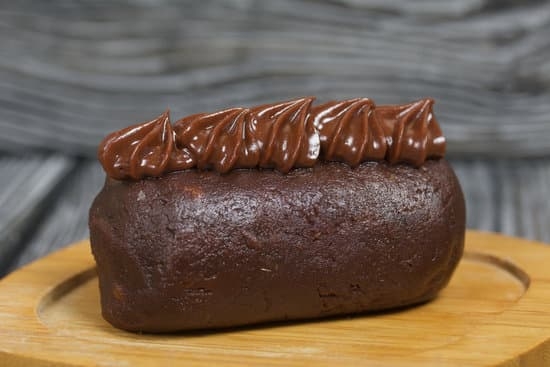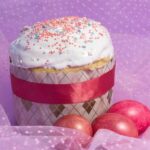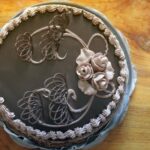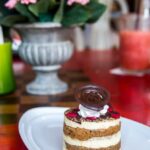Decorative icing is a fun and essential element of cake decorating, allowing bakers to express their creativity and elevate their sweet creations to works of art. In this article, we will delve into the exciting world of decorative icing for cakes, focusing on how to make beautiful designs that will impress your family and friends.
Whether you are a beginner looking to learn the basics or an experienced baker wanting to refine your skills, this guide will provide you with all the necessary information to create stunning icing decorations.
To start your journey into the realm of decorative icing for cakes, it is important to gather the essential tools and ingredients needed for success. From piping bags and tips to powdered sugar and food coloring, having the right supplies at your disposal is crucial in achieving professional-looking results.
Understanding the different types of icing available, such as royal icing, buttercream, fondant, and ganache, will also play a significant role in determining the overall look and texture of your decorations.
In the following sections, we will provide you with a step-by-step guide on how to make each type of decorative icing, along with helpful tips and tricks for mastering the process. Additionally, we will explore techniques for coloring and flavoring your icing creations, as well as various piping techniques that can be used to create stunning designs like rosettes, swirls, ruffles, and more.
By the end of this article, you will be equipped with all the knowledge you need to create intricate designs using decorative icing on your cakes.
Essential Tools and Ingredients for Making Decorative Icing
When it comes to creating beautiful icing designs for cakes, having the right tools and ingredients is essential. With the proper equipment and supplies, you can achieve professional-looking results that will impress your friends and family. Here is a detailed list of the essential tools and ingredients you will need to make decorative icing for cakes.
Tools
To start off, you will need basic tools such as a stand mixer or hand mixer for whipping up your icing, offset spatulas for smoothing out the icing on your cake, piping bags and tips for creating decorative designs, a turntable for easy decorating, and a bench scraper for achieving clean edges. Additionally, having a good quality palette knife or fondant smoother can help you achieve smooth finishes on your cakes.
Ingredients
The key ingredients for making decorative icing include powdered sugar (also known as confectioner’s sugar), unsalted butter or vegetable shortening for buttercream icing, egg whites or meringue powder for royal icing, marshmallows or gelatin for making fondant, and cream or chocolate for ganache. You can also add flavorings like vanilla extract, almond extract, citrus zest, or cocoa powder to enhance the taste of your icing creations.
Decorating Kits
For those who are just starting out with cake decorating, investing in a decorating kit that includes basic tools like piping bags, tips, couplers, and flower nails can be helpful. These kits often come with instructions on how to use each tool effectively and can save you time when gathering supplies individually. Make sure to also have food coloring gels or liquid food coloring on hand to add vibrant colors to your decorative icing.
Types of Decorative Icing
Decorative icing is an art form that can truly elevate the look of a cake. There are various types of icing that you can use to create stunning designs and decorative elements on your baked creations. Understanding the different types of icing available can help you choose the right one for your specific cake decorating needs.
1. Royal Icing: Royal icing is a smooth, hard-drying icing that is perfect for intricate designs like piping flowers, borders, and intricate details. It is made from powdered sugar, egg whites or meringue powder, and water. This type of icing is commonly used for decorating cookies as well.
2. Buttercream: Buttercream icing is a soft and creamy frosting that is easy to work with and versatile in terms of flavor variations. It is typically made from butter, powdered sugar, vanilla extract, and a touch of milk or cream. Buttercream can be used for piping decorations like rosettes, swirls, borders, and more.
3. Fondant: Fondant is a pliable icing that can be rolled out into thin sheets to cover cakes smoothly or molded into intricate shapes for decorations. It has a smooth texture and can be flavored and colored easily. Fondant provides a sleek finish to cakes and allows for endless creative possibilities.
4. Ganache: Ganache is a rich mixture of chocolate and cream that can be used as both frosting and filling for cakes. Ganache has a glossy finish when set and can also be poured over cakes for a luxurious look. It’s important to note that ganache sets firm so it’s great for creating smooth finishes on cakes.
Whether you prefer the classic elegance of royal icing or the smooth finish of fondant, each type of decorative icing offers its own unique properties and benefits when it comes to cake decorating. Experimenting with different types of icing can help you find the perfect one to bring your cake designs to life.
Step-by-Step Guide on How to Make Decorative Icing
Decorative icing is an essential component of cake decorating, adding flair and creativity to any baked masterpiece. Knowing how to make decorative icing for cakes can take your creations to the next level, impressing friends and family with your design skills.
There are various types of decorative icings, each offering unique textures and flavors that cater to different preferences and styles. Whether you prefer the firmness of royal icing or the smoothness of buttercream, understanding the characteristics of each type will help you achieve your desired results.
To begin making decorative icing for cakes, it is crucial to have the right tools and ingredients on hand. Some essential tools include piping bags, tips of various sizes for different designs, offset spatulas for spreading icing smoothly, and a good mixer for whipping up buttercreams and frostings.
As for ingredients, common items like confectioners’ sugar, butter or shortening, vanilla extract, milk or cream, and food coloring are basics in most recipes. Depending on the type of decorative icing you want to make – whether it’s royal icing with egg whites or buttercream with powdered sugar – having a well-stocked pantry will ensure smooth sailing in the baking process.
For those new to decorating cakes with intricate designs using decorative icing, a step-by-step guide is invaluable in helping navigate through the process. Each type of decorative icing requires specific instructions from mixing ingredients to achieving the right consistency for piping or spreading onto cakes.
Understanding these steps and following them diligently will enhance your chances of success in creating beautifully decorated cakes that look as good as they taste. Experimenting with different techniques and practicing regularly will also improve your skills over time, turning you into a pro at cake decorating with decorative icing.
| Decorative Icing Type | Key Ingredients |
|---|---|
| Royal Icing | Egg whites, confectioners’ sugar |
| Buttercream | Butter or shortening, powdered sugar |
| Fondant | Gelatin, glycerin, powdered sugar |
Coloring and Flavoring Decorative Icing
When it comes to creating stunning cakes, decorative icing plays a crucial role in adding that perfect finishing touch. One essential aspect of working with decorative icing is coloring and flavoring it to match the theme or taste of your cake. There are various ways you can achieve vibrant colors and delicious flavors in your icing creations, allowing you to truly customize your designs.
Coloring Decorative Icing
One popular method for coloring icing is using gel food coloring, which provides intense and vibrant colors without altering the consistency of the icing. Simply add a few drops of gel food coloring to your base icing and mix until you achieve your desired shade. If you prefer natural coloring options, you can use powdered colorants made from ingredients like beetroot powder, matcha powder, or turmeric for a more organic look.
Flavoring Decorative Icing
Adding flavor to your decorative icing can elevate the taste of your cake design. Vanilla extract is a classic choice for adding a subtle sweetness to the icing, while other extracts like almond, lemon, or orange can provide unique and flavorful notes. For a richer taste, consider incorporating cocoa powder or espresso into chocolate icing. You can also experiment with flavored oils or syrups to infuse your icing with inventive tastes like lavender, mint, or coconut.
Combining Color and Flavor
To truly make your decorative icing stand out, consider combining color and flavor for a multi-sensory experience. For example, if you’re creating a tropical-themed cake with pineapple flavors, use yellow food coloring combined with pineapple extract in the icing.
This not only enhances the visual appeal of the cake but also delights the taste buds of those enjoying it. Experimenting with different combinations of color and flavor will allow you to create unique and personalized designs that are as delicious as they are visually stunning.
Piping Techniques for Creating Stunning Designs
Decorative icing is a crucial element in cake decorating, and mastering piping techniques can take your creations to the next level. Whether you’re a beginner or an experienced baker, learning various piping techniques can help you create stunning designs on your cakes. Below are some popular piping techniques that you can use to elevate your cake decorating skills:
- Rosettes: Rosettes are beautiful swirls of icing that add an elegant touch to any cake. To create rosettes, start by holding the piping bag at a 90-degree angle to the surface of the cake. Begin piping in a circular motion while applying steady pressure to achieve even layers of icing.
- Swirls: Swirls are versatile and can be used to create whimsical designs on cakes. To make swirls, hold the piping bag perpendicular to the cake surface and slowly pipe while moving your wrist in a circular motion. You can create different sizes of swirls by adjusting the pressure on the piping bag.
- Ruffles: Ruffles add a delicate and feminine touch to cakes, perfect for elegant occasions like weddings or baby showers. To create ruffles, start by piping small vertical lines close together and overlapping slightly. Gently push down on each line with a spatula or spoon to create a ruffled effect.
With practice and patience, you can master these piping techniques and use them to turn simple cakes into works of art. Experiment with different tips and icing consistencies to achieve various effects and textures on your creations.
Remember, practice makes perfect when it comes to cake decorating, so don’t be afraid to experiment with different piping techniques and designs. With time and dedication, you will develop your unique style and become proficient in using decorative icing to bring your cake visions to life. Go ahead, unleash your creativity, and have fun exploring the world of decorative icing for cakes.
Using Decorative Icing to Create Intricate Designs
Decorative icing opens up a world of possibilities when it comes to creating intricate designs on cakes. Whether you are a beginner or an experienced baker, using icing to create beautiful and elaborate decorations can take your cake creations to the next level. From delicate flowers to intricate borders and personalized lettering, there are endless ways to use decorative icing to make your cakes truly special.
When it comes to creating intricate designs with icing, practice makes perfect. Start by familiarizing yourself with different piping tips and techniques. For example, a petal tip can be used to create realistic flower petals, while a star tip can be used for rosettes or borders.
Experiment with different piping bags and tips to find what works best for the specific design you have in mind. Don’t be afraid to get creative and try new things – that’s the beauty of working with decorative icing.
One popular technique for creating intricate designs with icing is called stringwork, which involves piping thin lines of icing in various patterns to create a delicate lace-like effect. This technique requires a steady hand and some patience, but the results can be stunning.
Another option is using edible markers or paint brushes with food coloring to add fine details or lettering to your cake designs. Remember, practice is key when it comes to mastering the art of using decorative icing to create intricate designs on cakes.
| Practice Tips | Details |
|---|---|
| Experiment with different piping tips | Familiarize yourself with how each tip creates different shapes |
| Try out stringwork technique | Create delicate lace-like effects by piping thin lines of icing |
| Use edible markers or paint brushes for fine details | Add personalized lettering or intricate details to your cake designs |
Troubleshooting Common Issues With Decorative Icing
Decorating cakes with decorative icing can be a fun and creative process, but sometimes, things don’t go according to plan. Common issues like air bubbles, consistency problems, and other challenges can arise while working with icing. However, with some troubleshooting tips and tricks, you can overcome these obstacles and continue creating beautiful designs for your cakes.
Air bubbles are a frequent issue when working with decorative icing. They can create imperfections in your designs and affect the overall appearance of your cake. One way to prevent air bubbles is to make sure that your icing is at the right consistency before piping. Additionally, gently tapping the filled piping bag on the counter or squeezing out a small amount of icing before starting to pipe can help release any trapped air within the bag.
Consistency problems are another common challenge when making decorative icing for cakes. If your icing is too stiff or too runny, it can be difficult to work with and may not hold its shape when piped onto the cake.
To achieve the perfect consistency, make sure to follow the recipe instructions carefully and adjust by adding more liquid (such as water or milk) for a softer icing or more powdered sugar for a stiffer icing. It may take some trial and error to find the right balance, so don’t be afraid to experiment until you reach the desired consistency.
In addition to air bubbles and consistency issues, there are other common problems that you may encounter while working with decorative icing. These could include color bleeding, frosting cracks, or difficulty piping intricate designs. By being patient, practicing regularly, and following the step-by-step guide on how to make decorative icing provided earlier in this article, you’ll be able to troubleshoot these issues effectively and create stunning designs for your cakes every time.
Top Tips for Success
In conclusion, mastering the art of making decorative icing for cakes is both a skill and a creative outlet that can bring joy to both bakers and those who get to enjoy their delicious creations. By exploring different types of icing such as royal icing, buttercream, fondant, and ganache, you can discover which works best for your designs and taste preferences. Understanding the essential tools and ingredients needed for making decorative icing is crucial in achieving professional results.
Coloring and flavoring your decorative icing opens up a world of possibilities to customize your creations to match any theme or occasion. Whether it’s adding a burst of color with gel food coloring or infusing flavors like vanilla or almond extract, experimenting with different combinations can enhance the overall look and taste of your cakes. Piping techniques like rosettes, swirls, ruffles, and more offer endless opportunities to create stunning designs that will impress everyone who sees them.
As you continue to practice and refine your skills in making decorative icing for cakes, don’t be discouraged by common issues that may arise. Troubleshooting problems like air bubbles or consistency issues is all part of the learning process, and with time and practice, you’ll become more confident in your abilities.
Remember to always have fun with your creations and let your imagination guide you in using decorative icing to create intricate designs that truly showcase your talents as a baker. Through dedication and creativity, you’ll soon be on your way to becoming a master at making beautiful and delicious cakes adorned with decorative icing.
Frequently Asked Questions
What Kind of Icing Is Best for Decorating Cakes?
When it comes to decorating cakes, the best kind of icing to use is buttercream. Buttercream is versatile, easy to work with, and can be piped into various designs. It also tastes delicious and holds up well in different temperatures.
How Do You Mix Icing Sugar for Decorations?
To mix icing sugar for decorations, start by sifting the icing sugar to remove any lumps. Then, gradually add a small amount of liquid (such as milk or water) while stirring constantly until you reach the desired consistency. Add any flavorings or colorings at this stage and mix well before using the icing for decorations.
What Are the 5 Most Commonly Used Icings for Cakes?
The five most commonly used icings for cakes are buttercream, royal icing, fondant, ganache, and cream cheese frosting. Each type of icing has its own unique flavor and texture, making them suitable for different types of cake decorating techniques and designs.

Welcome to our cake decorating blog! My name is Destiny Flores, and I am the proud owner of a cake decorating business named Cake Karma. Our mission is to provide delicious, beautiful cakes for all occasions. We specialize in creating custom cakes that are tailored specifically to each customer’s individual needs and tastes.





